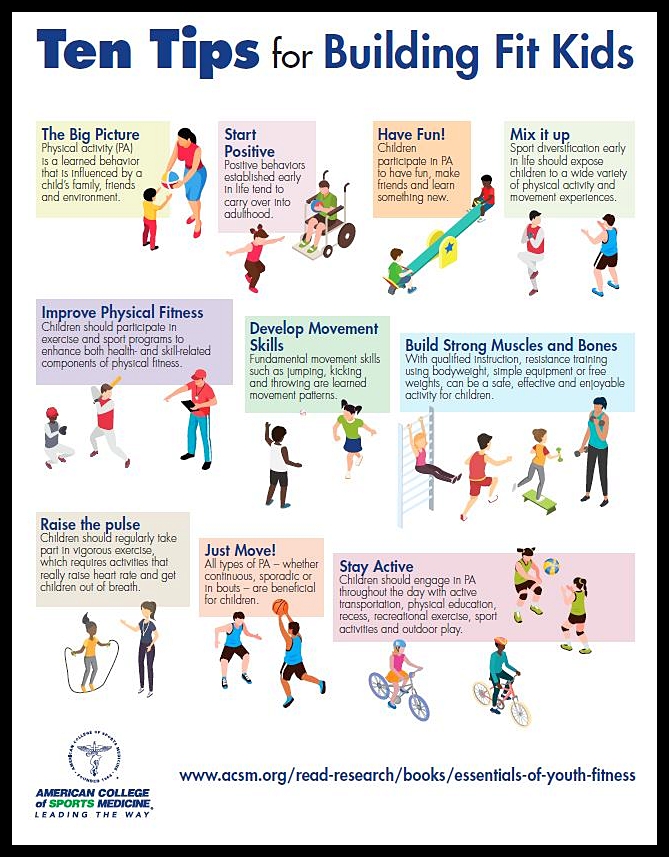
A good way to increase your arm size and build strength is to do an arm workout. This workout consists two separate exercises. Each set is 10 reps. While the ideal range for reps for your mass is eight to twelve, you can increase the weight to increase the challenge level. You can also stimulate growth by doing a superset (or combining exercises). These are some exercises to include in your arm exercise routine to see the best results.
A good plan to strengthen your biceps is one that combines muscle hypertrophy with muscular endurance. The exercises should be done until your arms fatigue. To get the best results, it is important to use proper form and technique. You can also try some of your favorite modalities, such as massages and knuckle-curling exercises, to make sure you're getting the best results possible.

You should finish your arm workout plan in 45 to 60 mins. Do not do supersets. These types of exercises can be beneficial for your arm health, but they will reduce your results. Always keep good form and breathe throughout your arm workout. Once you've mastered the basic movements, you should try to challenge yourself to do better with each subsequent workout. Once you have mastered the basic techniques, you can begin to work on the more advanced variations.
Combining cardio with arm exercises is possible. To maximize the results of an arm workout, do a half-hour session every day. Because the muscles are less tired after an arm workout, it's best to do cardio after. For the best results, you should plan to work out for half an hour or a full hour on a half-hourly arm workout. Correct form is also essential. By practicing correct form, you can improve your strength as well as get a more toned physique.
Your arm exercise program should include cardio exercises. As much motion as possible is your goal. If you can't achieve local fatigue from your exercise routine, you're likely using too much weight or working too fast. Your arm exercises should be performed with good form and proper breathing. Your strength and endurance will improve with effective arm exercises. These exercises will help you build stronger arms. To tone and strengthen your arms, the right arm workout is the best.

To get bigger and stronger arms, you need to understand the science behind muscle growth. While many people believe that lifting heavier weights and doing more sets will increase muscle size, this is not the case. Understanding the factors that affect muscle growth is key. A personalized arm workout program will yield the best results. If you want to see results, you should follow your arm workouts at least three times a week. You'll be amazed at how much larger and stronger your arms can get!
FAQ
How does an anti-biotic work?
Antibiotics can be used to kill bacteria. Antibiotics can be used to treat bacterial infection. There are many options for antibiotics. Some are taken orally, some are injected, and others are applied topically.
People who have been infected with certain germs may need antibiotics. One example is if someone has had chickenpox and wants to prevent shingles. Or, if someone has had strep throat, he or she might receive an injection of penicillin to help prevent pneumonia.
When antibiotics are given to children, they should be given by a doctor. Side effects of antibiotics can be more dangerous for children than for adults.
Diarrhea is the most common side effect from antibiotics. Other side effects that could occur include nausea, vomiting and dizziness. These side effects usually disappear once treatment has ended.
Does being cold give you a weak immune system?
There are two types of people in the world: those who love winter and those that hate it. You may wonder why you feel so bad when it's cold, regardless of whether you love it or hate it.
The fact is that our bodies are designed for warmth and function best. Because of this, our bodies evolved to thrive and survive in hot climates.
Now, however, we live in a completely different environment to how our ancestors lived. We spend more time indoors, are exposed to extreme temperatures (cold/heat), and eat processed food rather than fresh.
Our bodies don't have the ability to tolerate extremes. When we do venture out, our bodies are unable to cope with the extremes.
There are many ways to avoid these side effects. Staying hydrated is one way to combat this. Hydration is key to keeping your body well hydrated, flushing out toxins and keeping your system healthy.
Another important step is to ensure that you're eating healthy meals. Consuming healthy food helps maintain your body's optimal temperature. This is especially helpful for people who spend a lot of time indoors.
You can also meditate for a few minutes every day. Meditation can help you relax your mind, body and soul. This makes it easier to manage stress and illnesses.
How much should I weigh for my height and age? BMI chart & calculator
Use a BMI calculator to determine how much weight is needed to lose. Healthy BMI ranges between 18.5 to 24.9. Aim to lose 10 pounds per month if your goal is to lose weight. Enter your height and weight to calculate your BMI.
This BMI chart will help you determine if your body is overweight or obese.
What causes weight loss as we age?
How can you find out if your weight has changed?
Weight loss happens when there is less muscle mass and more fat. This means that the amount of calories consumed must exceed the amount of energy used daily. A decreased level of activity is the main cause of weight loss. Other causes include illness, stress, pregnancy, hormonal imbalances, certain medications, and poor eating habits. Weight gain occurs when there is more fat than muscle mass. It occurs when people eat more calories than what they use in a given day. The most common causes are overeating, increased activity, hormonal changes, and excessive calories.
The primary reason we lose weight is that we consume less calories than what we burn. The main reason we lose weight is because we exercise more often. This increases our metabolism rate and burns more calories each day. However, this doesn't mean that we'll necessarily get thinner; what matters is whether or not we're losing fat or gaining muscle. If we are burning more calories than what we eat, then we will lose weight. But, if we consume far more calories than what we burn, then we actually store them as fat.
As we age we tend to be slower in moving and thus we don't move nearly as much. We also tend to consume less food than when we were younger. Therefore, we tend to put on weight. On the other hand, we have more muscle mass and look larger than we actually are.
Without regularly weighing yourself, it is impossible to gauge how much weight you have lost. There are many options for measuring your weight. You can gauge your waist size, hips, hips, thighs and arms. Some people prefer to use a bathroom scale while others prefer to measure with tape.
If you want to track your progress, you should try weighing yourself once a week and measuring your waistline once a month. You can also take pictures of yourself every few months to see how far you've come.
Online, you can find out your height and weight. If you are 5'10" tall, and you weigh 180 lbs, then you would probably weigh 180 lbs.
How can you tell what is good?
Listen to your body. Your body knows best when it comes to how much exercise, food, and rest you need. Your body will tell you what to do so that you don't go overboard. Listen to your body and make sure you're doing everything you can to stay healthy.
What should I be eating?
You should eat lots of vegetables and fruits. These vegetables and fruits are rich in vitamins and minerals that will keep your immune system strong. They are also rich in fiber, which is good for digestion and makes fruits and vegetables filling. You should eat at least five servings per day of fruit or veg.
Make sure you drink plenty of water too. Water flushes out toxins and helps you feel full between meals. Drink about eight glasses each day.
Refined grains should be replaced with whole grains. Whole grains retain all nutrients including B vitamins, iron and zinc as well as calcium, magnesium, calcium, protein, and magnesium. Refined grains lack some nutrition.
Avoid sugary beverages. Sugary drinks are loaded with empty calories and contribute to obesity. Choose water, milk or unsweetened tea instead.
Avoid fast food. Fast food has little nutritional value. It may taste great but it won't give you the energy you need to function properly. Avoid soups, sandwiches and other unhealthy options.
Try to limit alcohol intake. Alcohol can lead to poor nutrition and empty calories. Limit your consumption to no more than 2 alcoholic beverages per week
Red meat should be cut down. Red meats contain high amounts of saturated fats and cholesterol. Choose lean cuts such as beef, pork and lamb, chicken, fish, or turkey.
Which lifestyle is best for your health?
A healthy lifestyle means eating healthy foods, exercising regularly, sleeping well, and avoiding stress. This will ensure that you live a long healthy life.
Starting small can make a big difference in your diet, and even your exercise routine. Try walking for 30 minutes each day to lose weight. You can also take up dancing or swimming if you are looking to be more active. An online fitness program such as Strava or Fitbit that tracks your activity could be a good option.
Statistics
- WHO recommends consuming less than 5% of total energy intake for additional health benefits. (who.int)
- This article received 11 testimonials and 86% of readers who voted found it helpful, earning it our reader-approved status. (wikihow.com)
- Extra virgin olive oil may benefit heart health, as people who consume it have a lower risk for dying from heart attacks and strokes according to some evidence (57Trusted Source (healthline.com)
- According to the Physical Activity Guidelines for Americans, we should strive for at least 150 minutes of moderate intensity activity each week (54Trusted Source Smoking, harmful use of drugs, and alcohol abuse can all seriously negatively affect your health. (healthline.com)
External Links
How To
What does the word "vitamin" mean?
Vitamins are organic compounds that can be found in foods. Vitamins are essential for our bodies to absorb nutrients from the foods we eat. Vitamins cannot be produced by the body. They must be acquired from food.
Two types of vitamins exist: water-soluble vitamin and fat-soluble vitamin. Water-soluble vitamins dissolve quickly in water. Vitamin C,B1(thiamine), B2 (2riboflavin), and B3 (3niacin), as well as vitamin C,B1, B2 (riboflavin), and B3 (niacin), vitamin B6 (pyridoxine), vitamin folic acid (biotin), pantothenic, and choline are examples. Fat soluble vitamins are stored in the liver and fatty tissue. You can find vitamin D, E K, A, beta carotene, and other fat-soluble vitamins.
Vitamins are classified according their biological activity. There are eight major categories of vitamins.
-
A – Essential for normal growth, and the maintenance of good health.
-
C is important for nerve function and energy production.
-
D - Essential for healthy teeth and bones.
-
E - needed for good vision and reproduction.
-
K - required for healthy muscles and nerves.
-
P - Essential for strong bones and teeth.
-
Q - Aids in digestion and absorption.
-
R – Required for the formation of red blood vessels.
The recommended daily allowance of vitamins (RDA), varies according to age, gender, physical condition, and other factors. The U.S. Food and Drug Administration, (FDA), sets the RDA value.
For example, the RDA for vitamin A is 400 micrograms per dayfor adults 19 years or older. Pregnant mothers need 600 micrograms per days because it is vital for the development and growth of their baby. Children ages 1-8 require 900 micrograms per day. Children under 1 year old require 700 micrograms daily, while infants over one year old need 500 micrograms every day. This decreases between 9 and 12 months.
Children between the ages 1--18 years old who are overweight or obese require 800 micrograms per Day, while those who are overweight or obese need 1000 micrograms. To meet their nutritional needs, children underweight and obese require 1200 micrograms a day.
Children between 4 and 8 years old with anemia will need 2200 micrograms daily of vitamin C.
Adults over 50 years of age need 2000 micrograms per day for general health. Breastfeeding or pregnant women require 3000 micrograms per daily due to higher nutrient demands.
Adults over 70 require 1500 micrograms each day, since they lose around 10% of their muscle mass every decade.
Women who have been pregnant or are lactating require more than the RDA. Pregnant woman need 4000 micrograms daily in pregnancy, and 2500 per day after childbirth. Breastfeeding mothers need to consume 5000 micrograms every day when breastmilk has been produced.